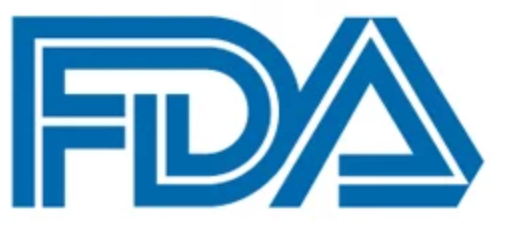Article
FDA Grants Priority Review to Adjuvant Nivolumab for Resected Esophageal or GEJ Cancer
Author(s):
The FDA has granted priority review to a supplemental biologics license application for nivolumab for use as an adjuvant treatment for patients with resected esophageal or gastroesophageal junction cancer following neoadjuvant chemoradiation treatment.

The FDA has granted priority review to a supplemental biologics license application for nivolumab (Opdivo) for use as an adjuvant treatment for patients with resected esophageal or gastroesophageal junction (GEJ) cancer following neoadjuvant chemoradiation treatment.1
The application was based on data from the phase 3 CheckMate-577 trial (NCT02743494), which demonstrated that nivolumab resulted in a statistically significant and clinically meaningful improvement in disease-free survival (DFS) compared with placebo in patients with resected esophageal or GEJ cancer after neoadjuvant chemoradiation.2
The median DFS with adjuvant nivolumab was 22.4 months (95% CI, 16.6-34.0) versus 11.0 months (95% CI, 8.3-14.3) with placebo (HR, 0.69; 95% CI, 0.56-0.86; P = .0003); this translated into a 31% reduction in the risk of recurrence or death in this population. Notably, this benefit was observed across all prespecified subgroups analyzed, including age, sex, race, ECOG performance status, disease stage at initial diagnosis, tumor location, histology, pathologic lymph node status, and PD-L1 expression.
Under the Prescription Drug User Fee Act, the FDA must make a decision by May 20, 2021.
“The FDA’s acceptance of our application marks important progress toward our goal of advancing treatment options for patients with esophageal or gastroesophageal junction cancer, in this case in early-stage disease,” Ian M Waxman, MD, development lead, gastrointestinal cancers at Bristol Myers Squibb, stated in a press release. “We look forward to working with the FDA to potentially bring [nivolumab] to these patients, who face a critical unmet need and remain at high risk for disease recurrence.”
The global, double-blind, placebo-controlled, phase 3 trial enrolled patients with stage II/II esophageal or GEJ cancer, adenocarcinoma or squamous cell carcinoma. Patients had to have undergone neoadjuvant chemoradiation and surgical resection and have residual pathologic disease and an ECOG performance score 0-1.
Patients were stratified based on histology (squamous vs adenocarcinoma), pathologic lymph node status ( ≥ypN1 vs ypN0), and PD-L1 expression (≥1% vs <1%).
A total of 794 patients were randomized 2:1 to receive either nivolumab at a dose of 240 mg once every 2 weeks for 16 weeks followed by 480 mg once every 4 weeks (n = 532) or placebo once every 2 weeks for 16 weeks and then once every 4 weeks (n = 262). Patients received treatment for up to 1 year. The primary end point of the trial was DFS, while key secondary end points included overall survival (OS), and as well as OS rates at 1, 2, and 3 years.
The median age of participants was 61.5 years, and the majority were male. Fifty-nine percent of patients had an ECOG performance status of 0, while 41% had a status of 1. Moreover, 36% of patients had stage II disease at the time of initial diagnosis and 64% had stage III disease. Had With regard to tumor location, 59.5% had esophageal cancer and 40.5% had GEJ cancer. Additionally, 29% had squamous cell carcinoma and 71% had adenocarcinoma.
Seventeen percent of patients in the investigational arm had a PD-L1 expression of 1% or greater and 70% had an expression of less than 1%; in the placebo arms, these rates were 15% and 75%, respectively.
The median duration of treatment in the nivolumab arm was 10.1 months versus 9.0 months in the placebo arm. Ninety-four percent of patients on the investigational arm discontinued treatment versus 93% of those on the control arm. The most common reason for discontinuation in those who received adjuvant nivolumab was due to treatment completion (43%), followed by progressive disease (28%), treatment-related toxicities (11%), adverse effects (AEs) not related to treatment (3%), patient decision (8%), and other (2%).
Notably, 89% of patients who received nivolumab had a relative dose intensity of 90% or greater.
Regarding safety, 96% of patients who received nivolumab experienced any-grade AEs with 34% grade 3 or 4 in severity. Seventy-one percent of patients reported any-grade treatment-related AEs (TRAEs) and 13% were grade 3 or 4. However, nivolumab was found to be well tolerated overall with the majority of TRAEs only grade 1 or 2 in severity. Commonly reported TRAEs in the investigational arm included fatigue (17%), diarrhea (17%), pruritis (10%), and rash (10%).
Additionally, 17% of patients who received adjuvant nivolumab experienced any-grade endocrine TRAEs, 17% had gastrointestinal, 9% had hepatic, 4% had pulmonary, 1% had renal, and 24% had skin toxicities. Most of the select TRAEs were grade 1 or 2 in the nivolumab arm and 1% or less of patients experienced grade 3 or 4 toxicities, No grade 5 select toxicities associated with treatment were reported. The most frequently reported grade 3/4 TRAEs observed with nivolumab were pneumonitis (n = 4) and rash (n = 4).
References
- US Food and Drug Administration accepts for priority review application for Opdivo (nivolumab) and adjuvant therapy for patients with resected esophageal or gastroesophageal junction cancer. News release. Bristol Myers Squibb. January 20, 2021. Accessed January 20, 2021. http://bit.ly/3qDi6bT.
- Kelly RJ, Ajani JA, Kuzdzal J, et al. Adjuvant nivolumab in resected esophageal or gastroesophageal junction cancer following neoadjuvant chemoradiation therapy: first results of the CheckMate 577 study. Presented at: 2020 ESMO Virtual Congress; September 19-21, 2020; Virtual. https://bit.ly/2M3Csfo.









